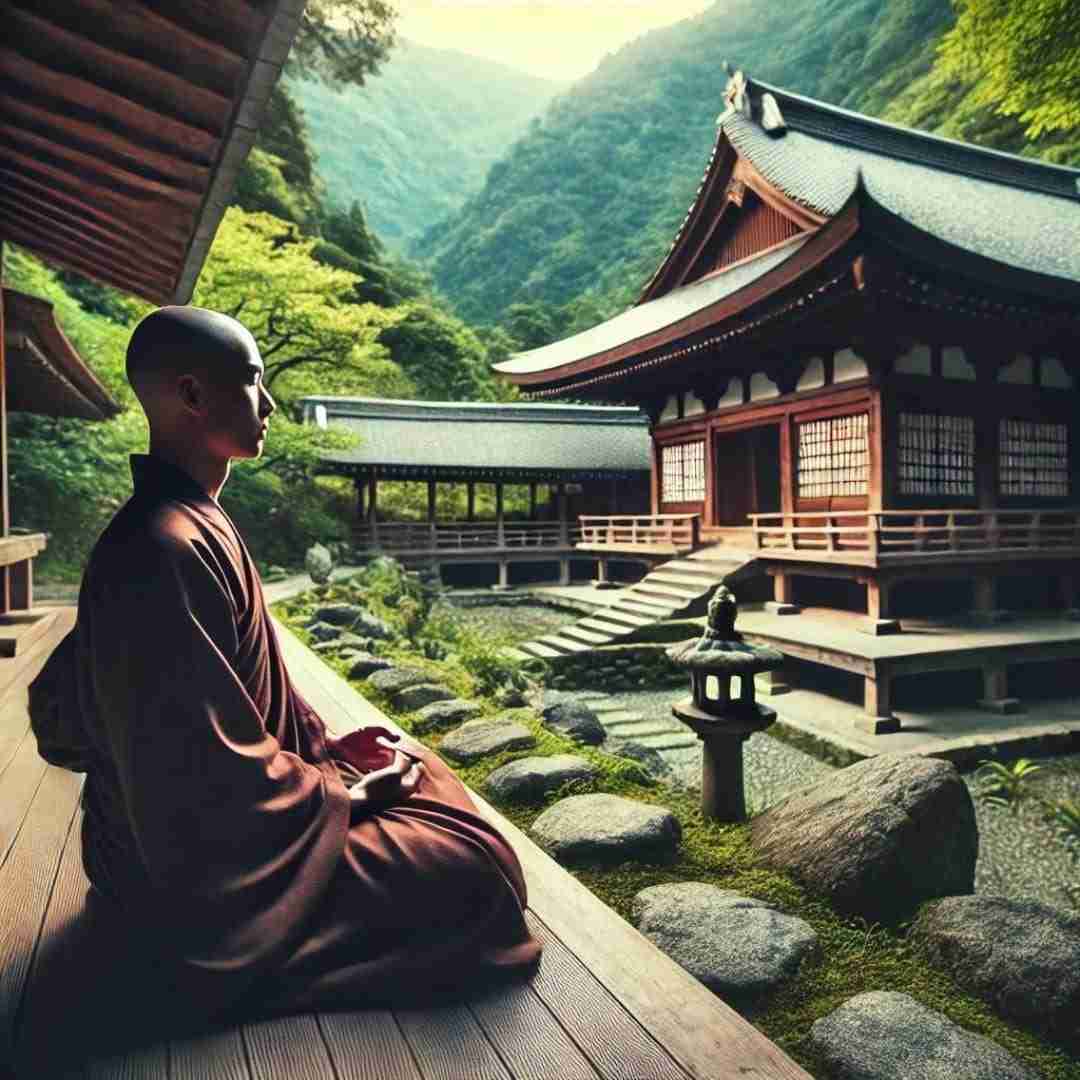In the whirlwind of modern existence, finding moments of peace and clarity can seem like an elusive goal. Yet, the pursuit of a Zen state of mind invites us to pause, breathe, and become fully present. At its core, a Zen state of mind is about cultivating mindful awareness and embracing each moment as it unfolds. This practice encourages us to navigate everyday life with a sense of calm attentiveness, transforming the ordinary into something profound.
In essence, a Zen state of mind is an invitation to live more fully and deeply. It asks us to be present, to bring mindful awareness to our actions, and to engage with the world with a calm and open heart. By making a conscious effort and embracing the practices of Zen, we can navigate the complexities of life with greater ease and joy. This journey is not about achieving perfection but about finding beauty and tranquility in the midst of our imperfect lives.
Let’s explore together the meaning and benefits of a Zen state of mind and how we can practice living in this beautiful state on a regular basis.
The Story of Hoshin

In a secluded mountain village in Japan, nestled among towering pines and clear, flowing streams, lived a Zen Buddhist monk named Hoshin. His name, meaning “heart of the star,” reflected the radiant peace he carried within him, a beacon of calm in a world often fraught with turbulence.
Hoshin’s journey began in the large, bustling city where he was born. As a child, he was curious and adventurous, always eager to explore the world around him. His parents, while loving and supportive, were often busy with their daily chores, leaving young Hoshin to find solace in the quiet corners of the family garden. It was here, among the blooming cherry blossoms and the gentle hum of bees, that he first experienced a sense of profound peace and connection.
As he grew older, Hoshin longed for something deeper. Something beyond the material pursuits that consumed those around him. He observed the people in his city rushing through life, their minds clouded with worry and desire. He saw how the pursuit of wealth and status often led to dissatisfaction and suffering. This realization planted a seed in him, one that would sprout and become his great spiritual quest.
Leaving It All Behind
At the age of twenty, Hoshin left his home and embarked on a journey to a remote Zen monastery high in the mountains. The path to the monastery was arduous, filled with steep climbs and narrow trails, and at times, Hoshin questioned that small voice inside him telling him to continue on.
Upon reaching the monastery, Hoshin was greeted by the head monk. Master Tetsuo was a man of few words but immense wisdom, as Hoshin would eventually learn. Under Tetsuo’s guidance, Hoshin began his training in Zen Buddhism. He learned the art of Zazen, or seated meditation, and the practice of mindfulness in every action, whether it was sweeping the courtyard or preparing a simple meal.
One day, Master Tetsuo asked Hoshin to sit by a small stream that ran through the monastery grounds and observe its flow. “What do you see?” Tetsuo inquired.
Hoshin watched the clear water cascade over rocks and pebbles, forming eddies and ripples, before continuing its journey downstream. “I see the water flowing, master,” Hoshin replied.
Tetsuo nodded. “And how does the water flow?”
Hoshin pondered for a moment. “It flows freely, without hesitation. It moves around obstacles, carving its path gently and persistently.”
Master Tetsuo smiled. “Just like the stream, a Zen state of mind flows effortlessly. It does not resist or cling but adapts and moves with grace. It finds its way through life’s challenges, not by force, but by embracing the nature of each moment.”
This simple yet profound lesson resonated deeply with Hoshin. He realized that a Zen state of mind was not about escaping from life’s difficulties but about flowing with them. It was about being fully present, accepting each moment as it is, and responding with clarity and discernment.
The Test of Adversity
Years passed, and Hoshin’s practice deepened. He became known in a nearby village as a source of tranquility and wisdom. People would often visit him, seeking guidance and solace in times of trouble.
One winter, a severe storm swept through the village, causing significant damage to homes and crops. The villagers were distraught, unsure of how they would recover from such a disaster. They turned to Hoshin for help.
Hoshin gathered the villagers in the main hall of the monastery and invited them to sit in silence. “Let us meditate together,” he said. As they sat in meditation, Hoshin guided them to focus on their breath and feel the stillness within. Gradually, the worry of the villagers that was once palpable began to dissipate and was replaced by a sense of calm unity.
After the meditation, Hoshin spoke to the villagers. “The storm has passed, and we are here together. Just as we find peace within ourselves, we can find the strength to rebuild our homes and our lives. Let us approach this challenge with the same calm and determination as the flowing stream.”
Inspired by Hoshin’s wisdom, the villagers worked together, helping each other repair the damage and restore their community. They realized that their true strength lay not in resisting the storms of life but in embracing them with a Zen state of mind.
Imparting the Zen State of Mind
Soon after, Hoshin left the monastery and moved into the village, sharing his wisdom and guiding others on their spiritual paths. He became a beloved figure not just for his teachings but also for embodying the principles of Zen in every aspect of his life.
Years later, as Hoshin prepared for his final journey, he gathered his students and the villagers around him. With a serene smile, he shared his final teaching. “Remember, the Zen state of mind is within each of you. It is the stillness in the midst of movement, the calm in the heart of the storm. Nurture it, and it will guide you through all of life’s challenges.”
As he closed his eyes and took his last breath, Hoshin’s face radiated the profound peace that had defined his life. The villagers and students mourned his passing but celebrated his legacy by continuing to practice and live by the principles he had taught them.
The story of Hoshin is a timeless reminder of the power and beauty of a Zen state of mind. It teaches us that true peace and serenity come not from escaping the world but from embracing it with mindfulness, simplicity, and compassion.
In a world filled with noise and chaos, the journey to a Zen state of mind is a path worth walking. It is a journey that brings us closer to our true selves and to the profound tranquility that resides within. By following the simple yet profound teachings of Zen, we can find the strength and serenity to navigate the challenges of our own journeys.
Zen Philosophy
Zen philosophy is marked by its unique approach to understanding and experiencing reality. Unlike many other spiritual traditions, Zen does not focus heavily on metaphysical doctrines or elaborate rituals. Instead, it emphasizes direct, personal experience and the importance of living in harmony with the present moment.
Some keys to Zen philosophy include:
Non-Duality (as in ‘not two; but one’): Zen teaches that the perceived separation between the self and the world is an illusion. Everything is interconnected and interdependent, and true understanding comes from experiencing this unity directly.
Impermanence: Zen embraces the transient nature of life. Everything is constantly changing, and recognizing this impermanence can lead to greater acceptance and less suffering.
Emptiness (Sunyata): In Zen, “emptiness” refers to the idea that all things lack inherent, independent existence. This concept encourages detachment from rigid ideas and beliefs, allowing for a more fluid and open experience of life.
Zen in Modern Times

Zen Buddhism has significantly influenced various aspects of contemporary culture, including art, literature, and psychology. Its teachings on mindfulness and meditation have been integrated into many secular practices, promoting mental well-being and stress reduction. Zen’s emphasis on simplicity and living in the present moment resonates with people seeking to counterbalance the complexity and pace of modern life.
Zen and the Art of Motorcycle Maintenance by Robert M. Pirsig
This iconic book(affiliate link), although not strictly about Zen Buddhism, merges Western and Eastern philosophical concepts and explores the idea of “quality” in everyday life. Pirsig’s narrative delves into the importance of mindfulness, the pursuit of excellence, and the meditative aspects of motorcycle maintenance. The book has become a cultural touchstone for its unique blend of Zen principles with a modern quest for meaning.
Steve Jobs
In the world of technology and innovation, Steve Jobs, the co-founder of Apple Inc., was significantly influenced by Zen Buddhism. His interest in Zen began during his travels in India and deepened through his relationship with Kobun Chino Otogawa, a Zen Buddhist priest. Jobs’ approach to design and business was marked by Zen principles of simplicity, focus, and mindfulness, which are evident in Apple’s minimalist product designs and user-friendly interfaces.
Today, Zen continues to attract individuals from diverse backgrounds who seek a path to inner peace and self-discovery. Zen centers and meditation groups around the world offer teachings and support for those interested in exploring its profound wisdom.
Core Principles and Practices of Zen Buddhism
Zen Buddhism is often characterized by its emphasis on direct, personal experience and a deep commitment to meditation practice. Some of its core principles include:
Mindfulness
Being fully present and engaged with whatever you are doing at the moment. Zen practitioners strive to bring the same mindfulness and presence cultivated during Zazen into every aspect of their daily lives. This practice encourages living with awareness and fully engaging with each moment, whether performing simple tasks or facing life’s challenges.
Zazen (Seated Meditation)
Zazen is the heart of Zen practice. It involves sitting in a comfortable but upright posture, focusing on the breath, and observing thoughts without attachment. The goal is to cultivate a state of mindfulness and presence, allowing the practitioner to access their true nature and attain a state of inner calm and clarity that provides profound insights.
Kensho and Satori
In Zen, “Kensho” refers to a sudden glimpse into the true nature of existence, while “Satori” denotes a more sustained experience of enlightenment. These insights are often described as moments of profound clarity and realization, where the distinction between the self and the world dissolves. They foster other key principles of Zen, such as simplicity and non-attachment.
Incorporating Zen into Daily Life
Incorporating Zen practices into our daily routines can be remarkably transformative. These practices are not about escaping from the world but engaging with it more deeply and meaningfully.
For example, seated meditation, or Zazen, is a fundamental Zen practice that trains the mind to settle and observe without attachment. Sitting quietly, focusing on the breath, and allowing thoughts to pass without clinging, we cultivate a deeper understanding of our own minds and develop the ability to maintain equanimity amidst life’s challenges.
5 Best Practices for a Zen State of Mind

1. Practice Mindfulness
Zen teaches that true peace and clarity arise from mindful awareness of the present moment. This means being fully engaged in whatever we are doing, whether it’s sipping a cup of tea, walking in nature, or even performing daily chores. By bringing our full attention to these activities, we experience them more richly and reduce the mental clutter that often accompanies a scattered mind.
This practice of presence can significantly enhance our appreciation for the simple joys of everyday life. You can practice mindfulness in various ways:
Mindful Breathing: Focus on your breath as it moves in and out. Notice the sensations in your body and let go of other thoughts.
Mindful Eating: Pay attention to the taste, texture, and aroma of your food. Eat slowly and savor each bite.
Mindful Walking: Walk slowly and deliberately, paying attention to your body’s movement and the environment around you.
2. Simplify Your Life
Zen emphasizes simplicity and the importance of focusing on what truly matters. Simplifying your life can reduce stress and create more space for joy and fulfillment. Consider the following:
Declutter Your Space: Remove unnecessary items from your home and work environment. A clean and organized space promotes a calm and clear mind.
Prioritize Your Time: Focus on activities and relationships that align with your values and bring you joy. Let go of obligations that drain your energy.
3. Meditate Regularly
Meditation is a powerful tool for cultivating a Zen state of mind. Even a few minutes of daily meditation can have profound effects on your mental and emotional well-being. Here’s how to get started:
Find a Quiet Space: Choose a peaceful place where you won’t be disturbed.
Sit Comfortably: Sit in a comfortable position with your back straight. You can sit on a cushion, chair, or the floor.
Focus on Your Breath: Close your eyes and bring your attention to your breath. Notice the sensation of the air moving in and out of your body.
Let Go of Thoughts: When thoughts arise, gently bring your focus back to your breath without judgment.
4. Embrace Non-Attachment
Non-attachment is about letting go of the need to control or cling to things, people, or outcomes. It doesn’t mean not caring; rather, it means being open to whatever happens without becoming overly attached. Practice non-attachment by:
Letting Go of Expectations: Accept things as they are without insisting they meet your expectations.
Being Open to Change: Recognize that change is a natural part of life and be willing to adapt.
Finding Joy in the Present: Focus on the present moment and appreciate it for what it is rather than longing for something else.
5. Cultivate Compassion
One of the most profound aspects of Zen is its emphasis on calm attentiveness. This is not merely about being calm but about being fully attentive and present with a serene heart. Whether we are interacting with others or sitting quietly alone, this attentiveness allows us to respond to situations with clarity and compassion rather than reacting out of habit or impulse.
Over time, this approach fosters a deeper connection to our own minds and a greater sense of peace and balance. Try these practices:
Self-Compassion: Treat yourself with kindness and understanding, especially during challenging times. Notice when you are not being kind to yourself, forgive it, and reframe your thoughts or the words you’re saying about yourself.
Empathy for Others: Make an effort to understand and share the feelings of others, quieting your mind’s initial judgments of what they may be saying or experiencing. Listen deeply and respond with care.
Acts of Kindness: Engage in small acts of kindness, such as helping a neighbor, offering a compliment, or volunteering.
Living with a Zen state of mind doesn’t require drastic changes or a complete overhaul of your lifestyle. Instead, it involves integrating these simple, mindful practices into your daily routine. Here are some ideas for how to begin incorporating the 5 best practices above into your day-to-day life:
Infuse Your Morning Routine: Start your day with a few minutes of meditation or mindful breathing to set a calm and focused tone.
Do It At Work: Take short breaks throughout your workday to stretch, breathe, or simply pause and observe your surroundings.
Evening Wind-Down: Create a relaxing evening routine that helps you unwind and prepare for restful sleep, such as reading Zen quotes, meditating, or practicing gentle yoga.
Achieving a Zen state of mind is a journey that requires practice and patience. Stick with it and you’ll be feeling the benefits of calm, clarity, awareness, and connection in no time.
The Power of Conscious Effort in Creating a Zen State of Mind

Zen provides a path to inner peace and enlightenment that is accessible to anyone willing to explore its teachings. Cultivating a Zen state of mind is a transformative practice that can lead to greater peace, clarity, and fulfillment; however, achieving a Zen state of mind requires conscious effort and practice. It’s not about passively waiting for calm to find us but actively creating a space for it in our lives.
The wisdom of Zen invites us to discover the beauty and clarity that lie within each moment of our lives. By embracing a direct experience of mindfulness, meditation, non-attachment, and compassion, you can navigate the complexities of life with a calm and centered perspective.
Remember, the journey to a Zen state of mind is a personal one, and it unfolds with patience. Start with small steps, and gradually, you’ll find yourself experiencing the profound benefits of this timeless wisdom.
How do you bring a Zen state of mind to your daily life?
Tell us in the comment section!




























0 Comments